Testing and replacing a consumer unit fuse is often required at some point unless you have a modern consumer unit. Fuses come in several different forms but all do the same thing, they are a deliberate weak link in a circuit. Fuses are there to protect a circuit and more importantly to protect people using electricity. A fuse will not stop you being electrocuted but it should blow before it causes a fire in a faulty appliance.
A fuse is simply a piece of wire that is designed to carry a certain amount of current, which is determined by the thickness of the wire in the fuse. A thin fuse wire will fail with just a few Amperes whilst a thick fuse wire could carry a hundred amperes or more.
| Before working on any electrical circuit you must ensure that it is isolated correctly and cannot accidentally be switched back on. Please read the article on safe isolation procedures before doing any electrical work. If you are not 100% certain what you are doing call a qualified electrician. Building regulations are changing all the time and modifying your home electrics could be against new rules and could invalidate your home insurance, if in doubt check first! |
The main fuse in your home is supplied by the electricity company and is normally rated at 100 Amperes, This fuse is protected by a tamper proof seal to prevent people tampering with it as the supply to this fuse cannot be isolated! Contact with the supply cables would mean almost certain death! Do Not interfere with this fuse.
If you suspect the main fuse has blown then call a qualified electrician. Fuses often blow for no apparent reason and it does not necessarily mean that there is a fault with the appliance.
CONSUMER UNIT FUSES
Before touching any fuses in the consumer unit make sure the switch is in the off position. Once the unit is switched off you can safely remove the fuses. Each circuit should be labelled to make identifying the blown fuse easier, if it is not labelled look for scorch marks as this is a sure sign of a blown fuse. Fuses come in many different types, although they all do the same job.
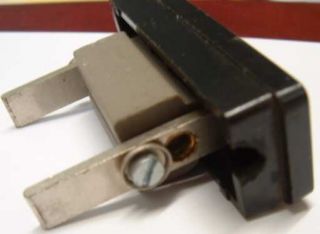
A re-wirable fuse, you can see the hole where the fuse wire is fed through just above the terminal screw.
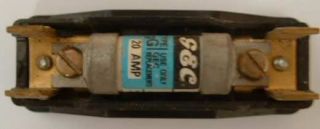
This is a cartridge type fuse, where the wire is enclosed within a ceramic cartridge. To change a faulty fuse simply undo the two screws and replace the cartridge and tighten the screws.
If it is not obvious which fuse has blown then remove one fuse only from the consumer unit at once, test and if satisfactory replace and move onto the next fuse.
Switch off and unplug all appliances from the faulty circuit. If it is a lighting circuit switch off all of the lights or the fuse could blow again.
Renewing a rewirable fuse If you have a rewirable fuse it is often possible to see the burnt out fuse wire in which case simply replace the wire.
- Undo the two terminal screws and remove any old bits of wire.
- Cut a length of the correct amperage fuse wire and feed it through the hole in the fuse carrier ensuring there is enough to wrap around the two terminal screws.
- Wrap the fuse wire clockwise around the first terminal and tighten the screw, ensure that the fuse wire is not pulled tightly and repeat on the other terminal screw.
Consumer unit Fuse testing
To test a fuse you are going to need a suitable tester, this can be either a multi meter or a continuity tester.
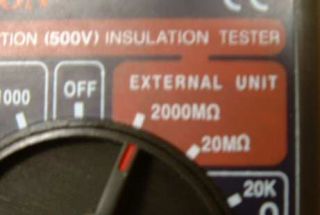
Select OHMS on your multi meter
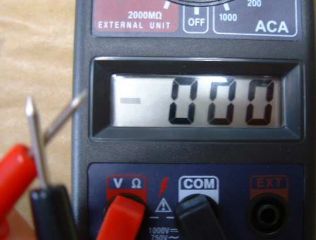
Test the meter by holding both probes together, the reading should be zero!
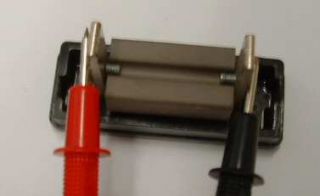
Now hold the two probes onto each end of the fuse, the reading again should be zero, If the meter does not read zero then the fuse has blown and needs replacing.
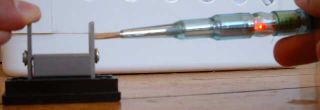
Testing a fuse with a earth test screwdriver is also possible, these screwdrivers are not neon screwdrivers as a neon only lights up on contact with a live conductor. These screwdrivers have a self contained button cell battery and LED and illuminate on contact with earth or when a circuit is made, hence if you hold both ends of the screwdriver it Illuminates as it has made a circuit through your body! This can be used to test a fuse by touching one end of the fuse and holding the screwdriver onto the other end of the fuse, if it illuminates then the fuse has not blown!
Replace the fuse into the consumer unit and re fit the cover and switch the main switch back on.



